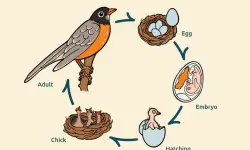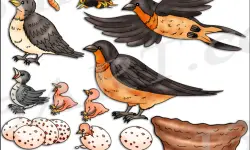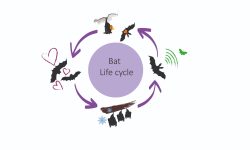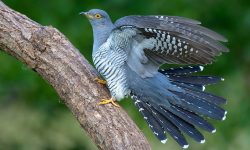Blackbirds are some of the most striking and vocal songbirds in North America. In Michigan, these birds play a vital role in wetland, grassland, and forest ecosystems. While the term “blackbird” refers specifically to members of the family Icteridae, it includes a variety of species with distinct behaviors, calls, and plumage patterns. Whether you’re a seasoned birder or a casual nature lover, Michigan offers a chance to encounter a wide diversity of these fascinating birds throughout the year.
Red-winged Blackbird (Agelaius phoeniceus)
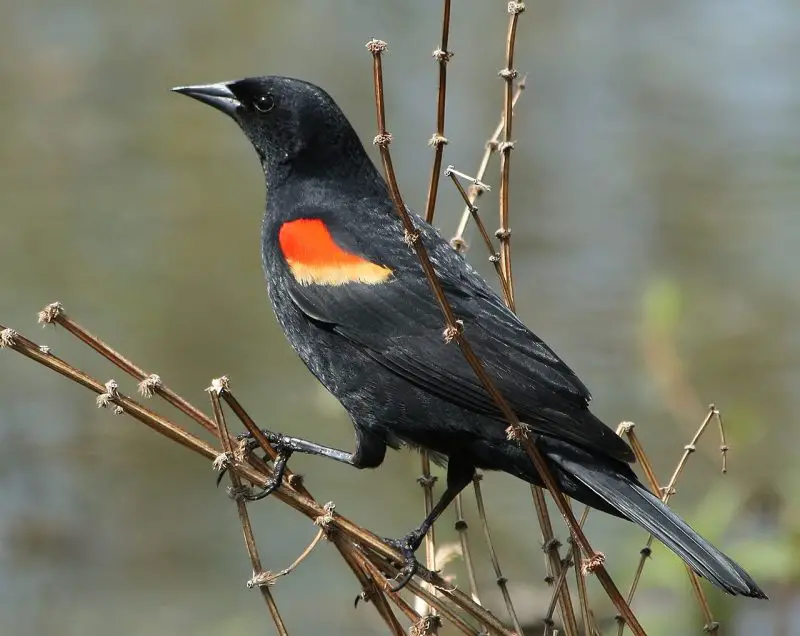
The Red-winged Blackbird is one of Michigan’s most familiar and widespread birds, easily recognized by the male’s glossy black feathers and bold red-and-yellow shoulder patches. Females look entirely different, with streaky brown plumage and a pale eyebrow stripe, often mistaken for large sparrows.
These birds favor wetlands, cattail marshes, and roadside ditches, where they nest low among dense vegetation. Males arrive early in spring to claim territories, loudly declaring ownership with their famous “conk-la-ree” song from high perches. A single male often mates with several females within his defended area.
Nesting begins in April and continues through summer. The female builds the nest and cares for the young, while the male focuses on territory defense. Their diet shifts with the seasons—eating insects in spring and summer, and seeds in fall and winter.
Although many Red-winged Blackbirds migrate south for the winter, some remain in southern Michigan. Their loud calls and dramatic displays make them one of the most recognizable signs of spring in the state’s marshy habitats.
Common Grackle (Quiscalus quiscula)
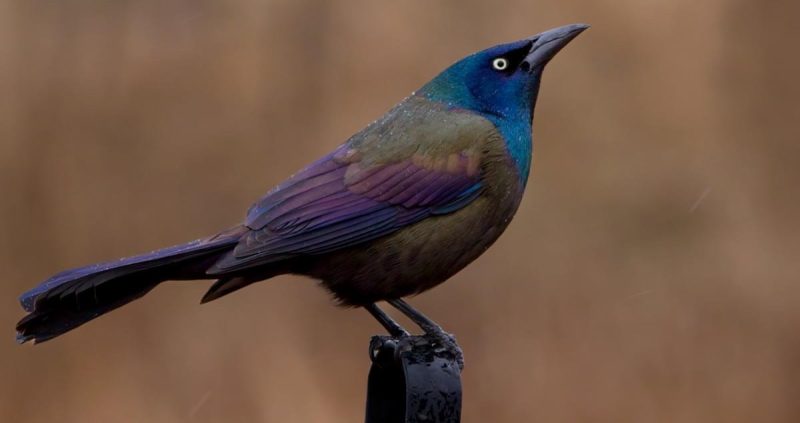
The Common Grackle is a large, glossy songbird with an iridescent purple-blue head and bronze body that shimmers in sunlight. Although technically not a true “blackbird,” it belongs to the same family and is often seen alongside Red-winged Blackbirds in mixed flocks.
Highly adaptable, grackles thrive in both urban and rural areas—frequenting parks, farms, and backyards. They forage in loud, social groups, feeding on insects, grains, fruits, and occasionally even small frogs or baby birds.
In Michigan, Common Grackles are widespread from spring through fall. Most migrate south for the winter, but large flocks are a common and familiar sight throughout the warmer months, especially in open landscapes and near human activity.
Rusty Blackbird (Euphagus carolinus)
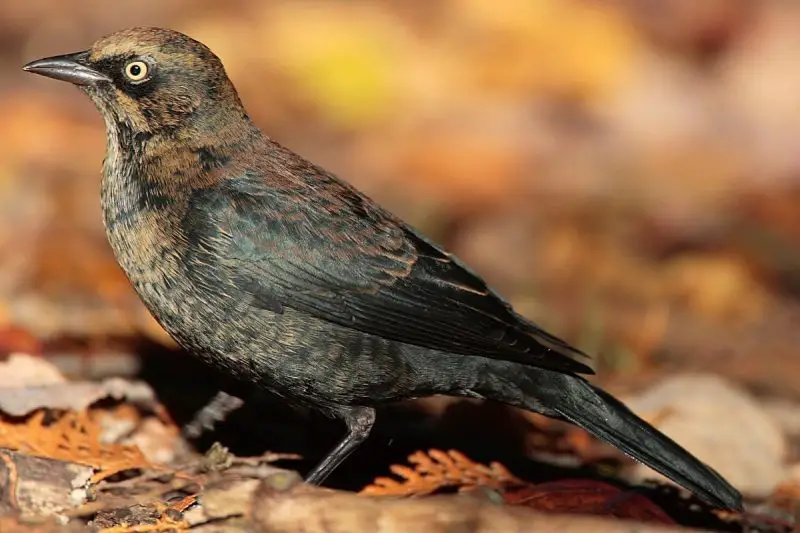
Often overlooked and increasingly rare, the Rusty Blackbird slips quietly through Michigan during spring and fall migration. In its non-breeding plumage, the bird lives up to its name, cloaked in feathers edged with a warm, rusty hue. Come summer, males transform into sleek figures of glossy black, their pale eyes glinting with intensity.
This species favors secretive places—shadowy bogs, flooded forests, and quiet swamps far from human noise. Once common, its population has plummeted by over 85% in recent decades, making it one of North America’s fastest-declining songbirds. Habitat loss, pollution, and climate shifts all play a role in its mysterious disappearance.
To catch a glimpse of a Rusty Blackbird in Michigan is to witness a fleeting moment in a vanishing story—one that reminds us how fragile and precious our wild spaces truly are.
Brewer’s Blackbird (Euphagus cyanocephalus)
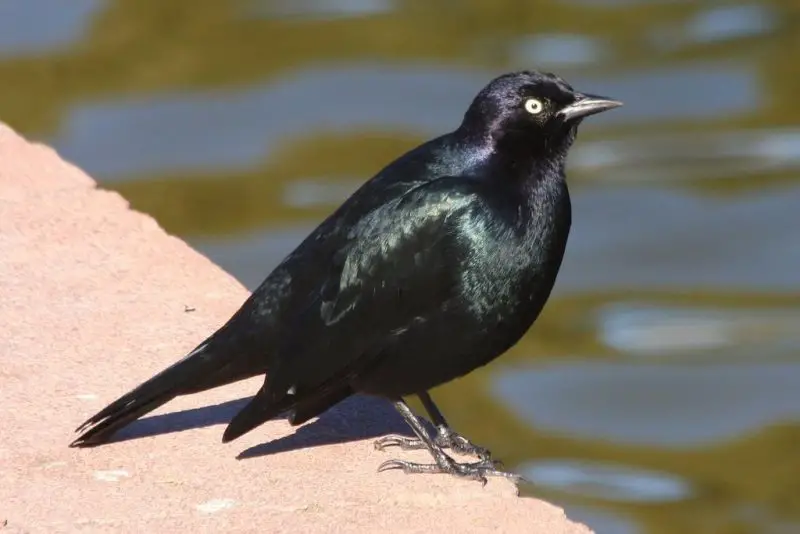
Brewer’s Blackbird is a sleek, sharp-eyed visitor from the West that shows up in Michigan mainly during migration. Males are striking in the sunlight, with glossy black feathers that shimmer with purples and blues and a distinctive pale eye that gives them a piercing look. Females, in contrast, wear a soft, dusty brown that helps them blend into open ground.
These birds thrive in open spaces—grassy fields, roadsides, pastures, and even parking lots—often feeding and traveling in loose flocks. They’re social and adaptable, usually seen alongside other blackbirds, grackles, or cowbirds during migration stops.
Though still uncommon here, Brewer’s Blackbirds are expanding their range eastward. In Michigan, sightings peak in spring and fall, offering birders a chance to catch a glimpse of this western species edging into new territory.
Yellow-headed Blackbird (Xanthocephalus xanthocephalus)
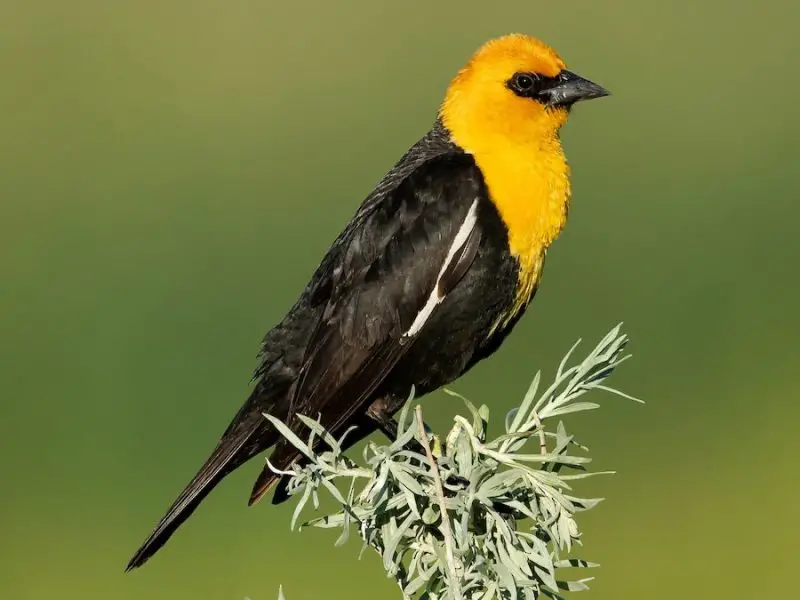
Bold, vibrant, and unmistakable, the Yellow-headed Blackbird is one of Michigan’s most striking marshland residents. Males are dramatic in appearance, with a bright yellow head and chest set against a jet-black body and white wing patches that flash in flight. Females are more muted, wearing a dusky brown coat with a softer yellow wash on the head and throat.
These birds favor large, open freshwater marshes thick with cattails and reeds. They often nest in colonies, sometimes right alongside Red-winged Blackbirds, though they dominate in size and presence. Their calls are unmistakable—metallic, creaky, almost insect-like—adding an eerie mechanical hum to wetland soundscapes.
In Michigan, Yellow-headed Blackbirds breed mostly in the Upper Peninsula and northern parts of the Lower Peninsula. They arrive in late spring and stay through summer, departing by early fall. Though less common than their red-winged cousins, their bold colors and haunting voices make them a memorable highlight for birders exploring northern marshes.
Brown-headed Cowbird (Molothrus ater)
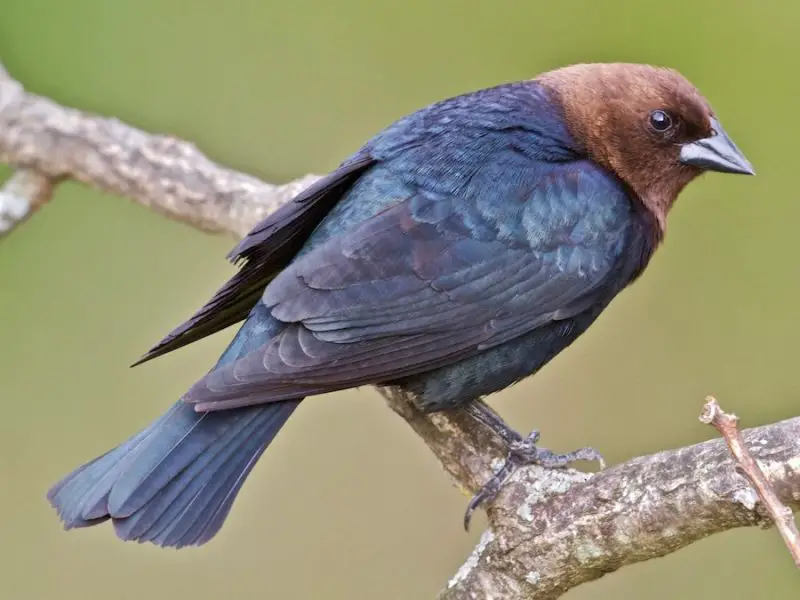
Though it doesn’t carry the name, the Brown-headed Cowbird belongs firmly within the blackbird family. Males are compact and glossy, with inky black bodies and rich chocolate-brown heads. Females are more subdued, covered in plain gray-brown plumage that makes them easy to overlook in fields and underbrush.
What sets this species apart is its unusual—and often controversial—breeding strategy. Brown-headed Cowbirds are brood parasites: they lay their eggs in the nests of other birds, leaving the unsuspecting hosts to raise their young. The cowbird chick typically hatches first, grows faster, and may outcompete or even displace the host’s own chicks.
This strategy has allowed cowbirds to thrive in open habitats like pastures, forest edges, and farmland throughout Michigan. Though widespread and often seen perched on fences or walking among grazing livestock, their presence can create conservation challenges for vulnerable songbirds. Still, as opportunists perfectly adapted to human-shaped landscapes, cowbirds remain one of the most successful—and debated—members of the blackbird clan.
Boat-tailed and Great-tailed Grackles: Rare Visitors
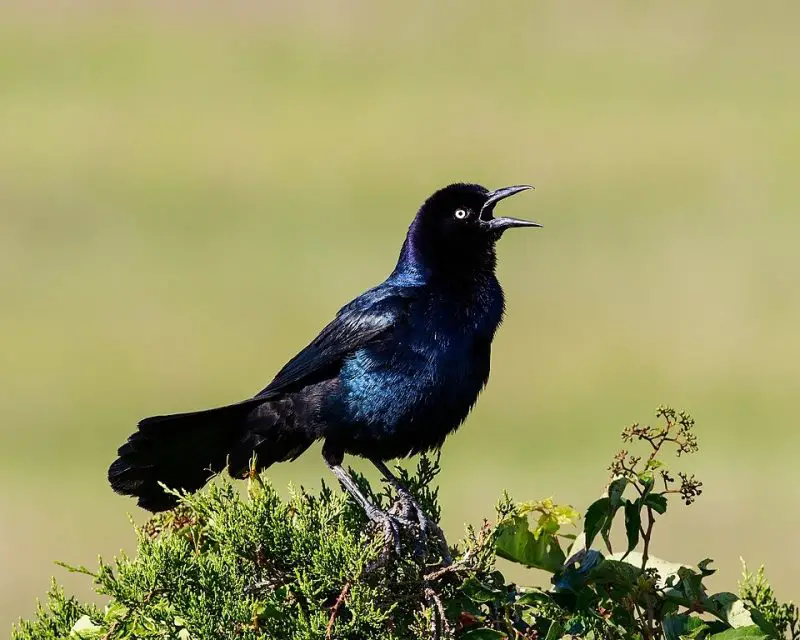
Though not regular fixtures in Michigan’s birdlife, the Boat-tailed and Great-tailed Grackles occasionally make rare appearances, stirring excitement among birders. These blackbird relatives are more at home in the southern U.S., where their dramatic calls and flashy appearances dominate marshes, cities, and coastal wetlands.
The Great-tailed Grackle, in particular, has been spotted in Michigan during unusual weather patterns or post-breeding dispersals. Larger than the familiar Common Grackle, it boasts an impressively long, keel-shaped tail and an arsenal of harsh, musical, and downright bizarre vocalizations. Males are glossy and imposing, while females are smaller and browner but equally vocal.
Boat-tailed Grackles are rarer still in Michigan, with only scattered, accidental records. They tend to stick to coastal regions of the Southeast and Gulf Coast but may wander far afield on occasion.
For birders monitoring state lists and rare bird alerts, these grackles offer a thrilling surprise—reminders of how bird ranges can shift, bend, and sometimes break the rules.
Where and When to Spot Blackbirds in Michigan
Michigan’s wetlands, meadows, and open woodlands provide ideal habitat for blackbirds, particularly from late March through October. Early mornings during spring migration are often the best time to observe multiple species. Look for large flocks in agricultural fields or listen for the distinctive calls near marshes and lakes.
Birding hotspots like Pointe Mouillee, Shiawassee National Wildlife Refuge, and Seney National Wildlife Refuge are excellent places to observe these birds during peak season. Winter blackbird sightings are rare but possible in southern counties during mild years.
Conclusion
From wetlands to woodlands, blackbirds bring color, sound, and complexity to Michigan’s natural landscapes. Their songs announce the arrival of spring, their flocks animate open fields, and their unique traits offer endless fascination for birders and biologists alike. Whether you’re admiring the vibrant plumage of a Yellow-headed Blackbird or noting the quiet presence of a migrating Rusty Blackbird, each sighting adds depth to your understanding of the local ecosystem.
As Michigan’s seasons shift and habitats evolve, staying attentive to these remarkable blackbird species can open your eyes to the beauty and resilience of the natural world. So grab your field guide, step outside, and see how many of these seven species you can find right in your own backyard.

